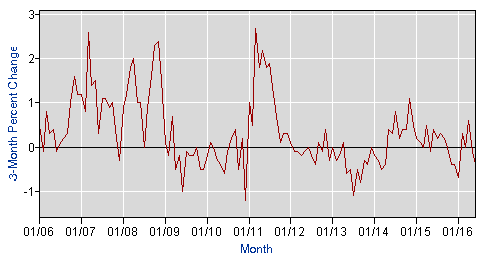Company Description
Linda’s has been operating in the NAB market for a comparatively short time. However, it has already established itself as a strong and efficient organization. Nevertheless, the entrepreneurship clearly needs further expansion. The company’s current vision implies catering to the needs of all stakeholders involved, with a particularly strong effect on customers and employees.
Non-alcoholic Beverage Industry Trends and Justification
Industry Trends
The NAB industry has been experiencing consistent growth over the past few decades, with a range of new products emerging on a regular basis. Even though the environment is currently dominated by large organizations such as Coca-Cola and Pepsi (The consumer goods industry in the United States, 2015), the target area is open to innovative products and provides the environment that new organizations with original products will feel inclined to explore.
According to the latest trends in the identified market, the global beverage sales made 994.1 bln l in 2015 (Statista, 2015), making a total of 3.8% of the global beverage sales (Statista, 2015). Although the identified percentage might be viewed as rather small, it, in fact, points to the opportunities for expanding that the NAB market is facing. The changes in the product price (see Fig. 1), however, show that Linda’s will have to be creative with its financial resources distribution given the plans for discounts and moderate prices.

It should also be borne in mind that the target industry can be defined as rather profitable. For instance, recent data on the progress of Coca-Cola shows that the organization gained the total of $67,749,000,000 in the target market. It could be argued that the identified organization has taken a monopoly over the identified environment. However, the industry offers a plethora of options for new entrants (Bailey, 2014).
Beverage Justification
The primary reason for choosing soda is that ti is one of the most common NABs purchased by people of all ages. In addition, the array of flavors that can be included in the drink is truly ample. Finally, the fact that the soda industry is becoming increasingly more profitable (Statista, 2015) deserves to be mentioned.
Company Strategic Position
Age-based strategic positioning seems to be the most sensible approach to adopt concerns culture-based positioning. With a strong emphasis on enhancement of healthy drinks, the product must appeal to the people that are concerned with their health and wellbeing.
Company Distribution Channels
The distribution channels will consist primarily of two levels. Specifically, the two-level channels will include a wholesaler and a retailer, the latter being the key link between Linda’s and the end customer. The drink will be sold in local stores, malls, bars, etc.
Risk Assessment
Identified Risks
The disapproval of the FDA is the primary concern for the entrepreneurship. In addition, the risks related to the competition rates are very high. Finally, the organization may suffer from the inability to distribute the resources accordingly.
Risk Mitigation Plan
A consistent and rigid control over the production processes, as well as high quality standards, will help avoid conflicts with the FDA. Taking a unique niche (i.e., producing healthy soda drinks with unique flavors) will allow for avoiding rivalry with Coca-Cola, PepsiCo, etc. The sustainability principles coupled with the Lean Management framework for waste reduction will serve as the foundation for addressing the resources distribution concern.
SWOT Analysis
A unique product that will help build brand recognition instantly is the primary strength of the organization. In addition, Linda’s will be based on a set of standards promoting not only customer satisfaction but also catering to the needs of employees. As a result, the latter are likely to excel in their performance and deliver the product of the finest quality possible. Moreover, the prerequisites for a sustainable use of resources and waste reduction will help increase revenues instantly. The entrenched competition rates, in their turn, can be viewed as the primary concern for Linda’s.
The lack of experience in addressing the subject matter, in its turn, clearly is the greatest weakness to be addressed. However, the company is facing an abundance of opportunities, the environmentalist-related niche being the key one to consider. Indeed, while several organizations operate in the identified realm, very few make healthy characteristics of their soda drinks as the selling point. Linda’s, on the contrary, is going to become a one-of-a-kind company that is likely to gain competitive advantage comparatively easily.
Naturally, Linda’s will face a range of threats in the target environment. For instance, the emergence of copycats or the firms that will use the same concept of healthiness is very likely as it is bound to attract a lot of people. Moreover, the possibly low quality of the companies that will create similar drinks may make a bad impression of Linda’s production, casting a shadow on the firm’s goods. Wholesalers may feel reluctant to purchase the drink that seems to be very similar to others, including Coca-Cola, Mountain Dew, etc.
Despite the issues outlined above, Linda’s products are likely to become instantly recognizable and well enjoyed among the target audience due to the advantages that the firm has. With an effective promotion campaign, the entrepreneurship must gain weight in the target market quite fast. Maintaining quality standards high and making decisions based on the firm’s values, its members are bound to be successful.
References
Bailey, S. (2014). A guide to the non-alcoholic beverage industry. Web.
Statista. (2015). Statistics and facts on non-alcoholic beverages and soft drinks. Web.
The consumer goods industry in the United States. (2015). Web.
U. S. Department of Labor. (2015). Consumer Price Index – All urban consumers. Web.